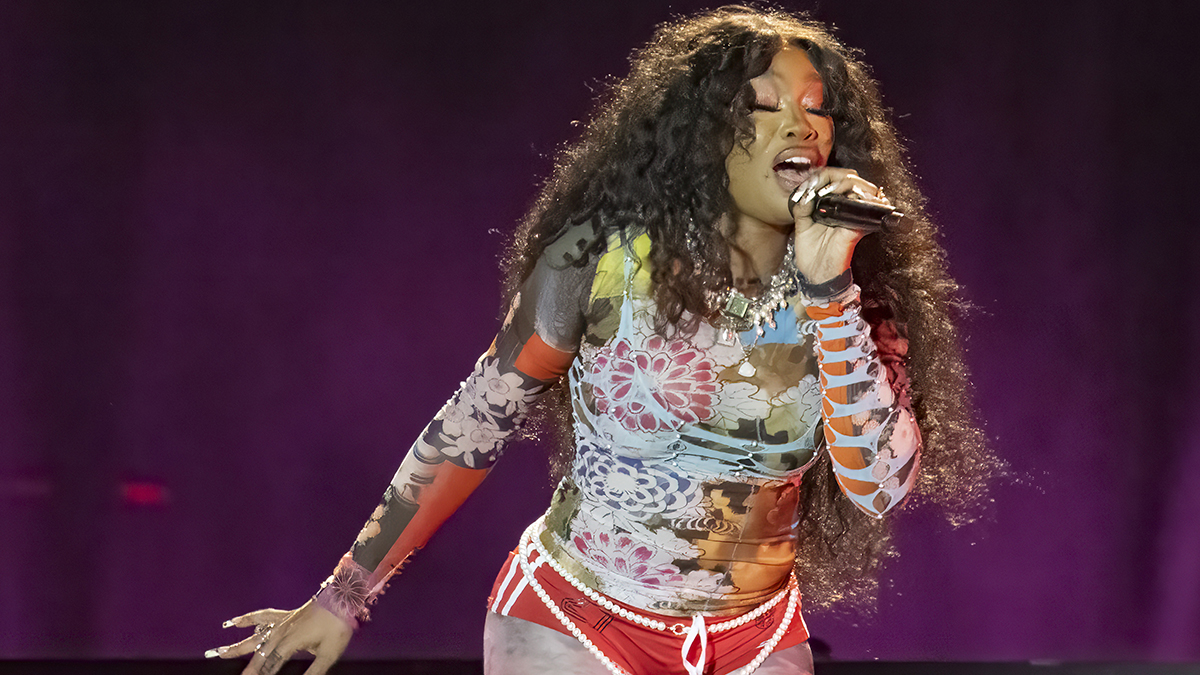
Released in 2023, Kill Bill became slow-burn superstar SZA’s first US number one, and one of the biggest hits of the year. This success represented the culmination of more than a decade of releases, which began in 2012 with a couple of well-received EPs. Her most recent album, SOS has achieved critical acclaim and commercial success, and SZA’s star is set to rise even higher this summer with a headlining appearance at the Glastonbury Festival.
Carter Lang is one of Kill Bill’s co-writers and producers, and his first encounter with SZA (Solána Imani Rowe) came in 2015.
“I’m from Chicago, and after college I kind of surfed around studios with friends of mine,” he told Music Week. “I had a keyboard in my car, I went with my friend Peter Cottontale to Classick Studios and I met SZA there. I didn’t really know who she was at the time or anything, so I was like, ‘I know this studio, I’m just going to do my thing.’
“We started working on a beat and we just started connecting. We talked about synthesizers and sounds. She can get kind of nerdy and I really liked that. I was like, ‘I’ve got a synthesizer in the car, you’re going to love this,’ and I brought it upstairs. It was probably the first analogue synthesizer that I had purchased – this weird Roland monosynth. It was an early ’70s primitive synth and we were bugging out over it.” After hitting it off, SZA invited Lang on tour as her bass player, which eventually led to him working with her in the studio.

“With Kill Bill, I had been trading ideas back and forth with Rob Bisel, a friend and collaborator of mine,” Lang recalls. “He’d engineered with SZA for the duration of the SOS project and we had a meet-up at my spot. He left me with a few little single instrument pieces. As producers, we all stack those up from time to time and I was like, ‘Three or four of these are really dope, I want to work on these.’
“I tried a drum beat right after he left because as soon as I get something, I want to jump on it. There was more of a rapping type of vibe to the beat because it felt like the music, those chords at the beginning, just led to that.”
Speaking to Sound on Sound, Bisel explained that “The idea for Kill Bill began with me messing on my [Sequential] Prophet-6. I bought it two years ago, and I played some basic chords using a flute‑like sound. I recorded that into Ableton as audio, and added a bassline, using an electric guitar that I tuned down an octave. At a certain point, I didn’t really know where to go with it, and sent it to producer Carter Lang to see if it sparked something in him.”
I liked the beat a lot. We didn’t have to remake the beat a million times, it came together quickly.
Carter Lang on Kill Bill
Spark something it most certainly did: “We listened to it the next week and I was like, ‘Nah, I’ve got to take a different approach. Maybe it’s not a digital drum-sounding song, maybe it’s something more organic,’” Lang tells Music Week. “A lot of the physical instruments that I have in my studio evoke old, dusty, warm and organic tones, so I started working on it a bit more and then Rob and I finished the beat off to the point where it was something that we could play to SZA. I liked the beat a lot. We didn’t have to remake the beat a million times, it came together quickly.”
Lang recalls that he played the beat to SZA while Bisel was in the bathroom. “It was just her and me, and I was like, ‘Man, I want to see what this beat is saying - this might be a sleeper.’”
Sure enough, the creative juices started to flow: “It was pretty late, but SZA started finding the pocket and then that was it - the flywheel unravelled. I think they kept working on it when I left, or they worked on it the next day and Rob was like, ‘Yo, this shit sounds crazy!’ And that was pretty much that.”
If the whole process sounds pretty effortless, that’s because it was. In fact, as SZA told Billboard last year, she almost found it annoying that this was the song from SOS that became a monster hit.
“I knew it would be something that pissed me off,” she admitted. “It’s always a song that I don’t give a fuck about that’s just super easy, not the shit that I put so much heart and energy into. Kill Bill was super easy - one take, one night.”
Lang concurs when he says that not much was changed from that initial “beat demo”, but he does recall that SZA was keen to make sure that her performance was as good as it could be. “I don’t know how many times SZA went over the vocals, but she definitely made sure it was airtight,” he remembers.
What’s more, Lang freely admits that he’s learned plenty from the star, too.
“SZA has her own style,” he says. “Her rhythms can get so complex, it’s this crazy combination of rap and song and she finds this perfect balance which just cuts through. The tone of her voice is also just so unique. When she hits the high notes you can feel the emotion in each line. Being with her for so long helped change my perception of rhythm and melody and how I was able to work that into my instruments.”







